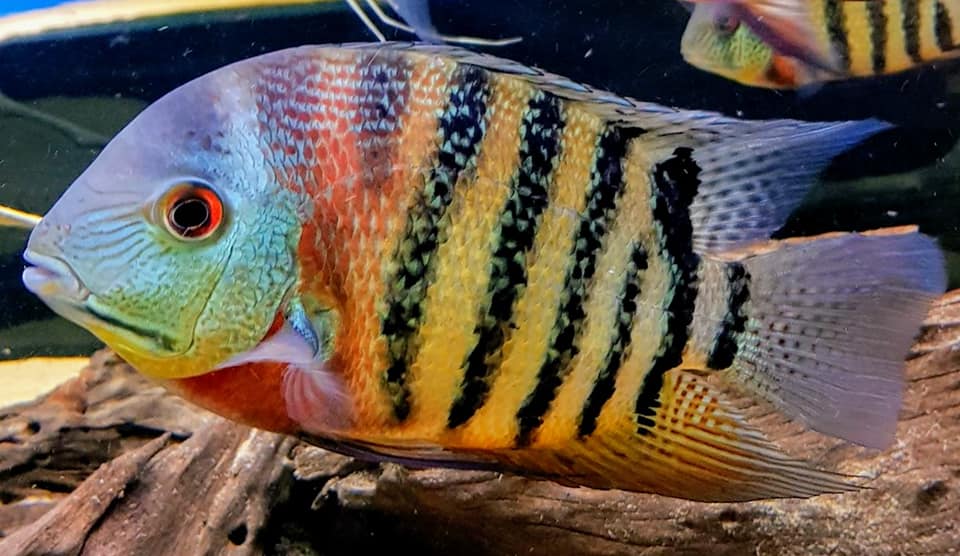My Store
TIGER STRIPED SEVERUMS
TIGER STRIPED SEVERUMS
Couldn't load pickup availability
🐅 Tiger Striped Severum – Striking Contrast, Peaceful Personality
The Tiger Striped Severum is a beautiful variation of the classic Heros cichlid, featuring bold black vertical bands against a golden, olive, or coppery background. With their graceful swimming style, intelligent behavior, and striking pattern, these Severums make a stunning centerpiece in peaceful South American setups or mixed cichlid aquariums.
Often referred to as the “poor man's discus,” Severums offer the beauty and grace of their more delicate cousins, but with hardier care requirements and greater compatibility. Tiger Striped Severums are especially appealing for aquarists who want both color and personality without extreme aggression.
🐟 Species Profile:
-
Scientific Name: Heros sp. (Tiger Striped variant)
-
Common Names: Tiger Severum, Barred Severum, Striped Severum
-
Adult Size: 8–10 inches
-
Temperament: Generally peaceful, can be semi-aggressive during breeding
-
Tank Size: 55+ gallons (single), 75+ for pairs or community setups
-
Water Parameters: 76–82°F | pH 6.5–7.4 | Soft to moderately hard water
-
Diet: Omnivore – flakes, pellets, frozen bloodworms, spirulina, veggie-based foods
🛠️ Tank Setup & Compatibility:
Tiger Striped Severums thrive in:
-
South American-style aquariums with driftwood, rocks, and live or artificial plants
-
Low to moderate flow and stable water quality
-
A well-oxygenated, well-filtered system
Compatible with:
-
Peaceful to semi-aggressive cichlids like geophagus, uaru, or festivums
-
Silver dollars, plecos, severum variants, tetras (too large to eat)
-
Avoid housing with highly aggressive cichlids or tiny fish
Behavior:
-
🧠 Intelligent and responsive – recognizes its keeper over time
-
🌿 Will occasionally nibble soft plants, so choose hardy varieties
-
👫 Can be kept solo or in male-female pairs
🛒 Why Buy from RobsAquatics.com?
Each Tiger Striped Severum is:
-
✅ Hand-selected for vibrant banding and strong body shape
-
✅ Well-acclimated to aquarium life and pellet-trained
-
✅ Shipped live with our Live Arrival Guarantee
-
✅ A standout addition to peaceful cichlid tanks, South American displays, or planted aquascapes
📦 Add a bold, peaceful centerpiece to your aquarium with the Tiger Striped Severum—perfect for aquarists who want beauty, size, and personality without the drama. Available now at RobsAquatics.com.
Share


